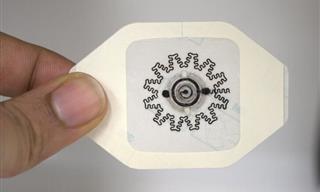Although it isn’t officially classed as a medical term, there is such a thing as a silent migraine. It’s a term used to describe experiencing a migraine aura, but without the accompanying head pain. In addition, it’s also used to describe the “I’m going to get a migraine” feeling, which is also known as a prodrome. Let's take a closer look at silent migraines:
Silent Migraine Symptoms

What makes a silent migraine different to experiencing a full-blown one is that the actual migraine never actually shows up. Symptoms usually include feeling foggy, coordination that’s a little off, or feelings of uneasiness.
How Many People Suffer From Silent Migraines?
It’s said that a quarter of all migraine sufferers experience a migraine aura prior to their migraine setting in. This usually includes visual, sensory or speech disturbances, as well as seeing spots, lights or zigzags. Some also report numbness or tingling in one arm, or having trouble speaking. A migraine would typically hit about half an hour after these symptoms are experienced.
What Are the Symptoms Like?
Luckily, migraine auras usually last just 15 to 20 minutes, but there are exceptions. Some individuals report experiencing continuous auras, meaning that the symptoms continue to present themselves throughout the day or stick around longer than usual.
Are Silent Migraines Easily Treatable?

Migraines have always been difficult for medical practitioners to treat, and this is because symptoms differ greatly from patient to patient. In fact, it’s said that no two are alike, and they actually change over a sufferer’s lifetime.
Postdrome Symptoms
In the aftermath of a migraine, it’s also possible to experience postdrome symptoms. These usually present themselves the day after a migraine itself, and they tend to feel like a hangover. Postdrome symptoms can also leave individuals feeling washed out and unable to think as sharply as they normally would, and are usually associated with silent migraines.
Treatment Options
Silent migraines can be treated with preventative migraine drugs, but they won’t necessarily help everyone. In some instances, off-label use of anti-epileptic medications might work to treat them, and this is because they can help to stabilize the function of brain cells.
If you happen to experience visual symptoms such as spots, flashes or sparkles, you might be inclined to see an ophthalmologist, but the likelihood is that they won’t be much help. These symptoms are better seen to by a headache specialist.
The Importance of Getting a Diagnosis

An eye-opening statistic in this regard is that half of all migraine sufferers never actually get a proper diagnosis, and only half of those diagnosed are ever prescribed treatment by their physicians. Although a primary care physician is a good place to start if you’re seeking treatment for migraines, you’ll likely need to be referred to a headache clinic or neurologist. You can refer to the American Migraine Foundation to help you find a specialist.
Content Source
Images by Deposit Photos.
 Go to BabaMail
Go to BabaMail























































